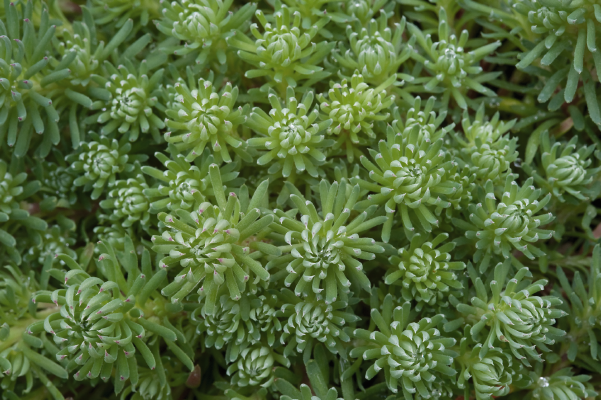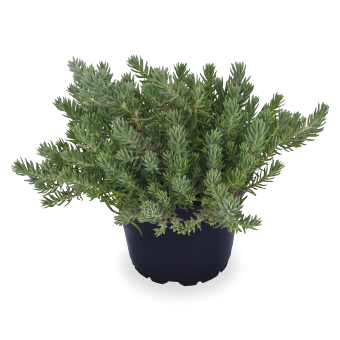

Oracle
- Attractive silvery-green ground cover
- Heat and drought tolerant
- Suitable for rock gardens and mixed containers
- Fast and easy to grow
- Blooms in bright yellow star clusters
- BeGreen Pelleted: Chemical and microplastic-free
- Crop Time
- Spring: 12 - 16 weeks
- Height ∅
- 6 ″ / 15 cm
- Exposure
- Sun
- Seed Form
- Raw Seed, BeGreen Pelleting
- Heat Zone
- 8-3
- Hardiness Zone
- 3a-9b
- Best Uses
- Bedding, Rockery
Culture guide
Usage
Pot, Rockery, dry and heat tolerant, roof garden, complementary
Sow time
January-March for green pots from April to August; June-August for flowering in pots the following year
Sowing method
3-5 seeds per plug, sowing directly into final pot is recommended
Germination
Germinates in 10-14 days at 65-72 °F (18-22 °C). Light improves germination and uniformity of emergence. Avoid excessive soil moisture.
Growing on
Transplant plugs after 7 weeks. Once plants have rooted out, begin reducing soil moisture levels and lower temperatures to 55-62 °F (13-16 °C). Warmer temperatures will promote softer, more rapid growth. Feed at 100-150 ppm nitrogen in a well-balanced mix. Vernalization is required for flower initiation in every variety except 'Spirit'. However, most varieties are grown for their foliage characteristics rather than for their flowers
Media
Use a well-drained, growing substrate with 0-15 % clay, 0-15 % parts (e.g. bark, wood fibres, perlite, sand),1-1,5 kg/m³ complete balanced fertilizer, 1-2 kg/m³ slow release fertilizer (3-9 months), iron-chelate, micronutrien
Temperature
Grow at 10-18 °C or outdoors. In winter indoors frost free at 3-5 °C or outdoors. Outdoor fleece cover needed. For wintering the root development should be very good. In spring the plants start to grow for 10-12 weeks at 15-18 °C. Cold temperatures at 10-12 °C will increase the cultivation time. A chilling period (vernalization) is required for flower initiation.
Fertilization
Low-moderate fertilization levels are required. Fertilize the crop weekly with 80-100 ppm nitrogen (at 2 kg/m³ slow release fertilizer in substrate), using complete balanced fertilizer. Avoid high ammonium and high nitrogen levels. Very high nitrogen levels in substrate cause shoot stretching and the shoots fall apart. Don't fertilize after mid September. In spring fertilize 80-100 ppm nitrogen of a complete balanced fertilizer. Prevent magnesium deficiency by applying magnesium sulphate (0,05 %) 1-2 times and in case of iron deficiency (above pH 6.0) apply iron-chelate for 1-2 times.
Stage I Starts with the radicle breaking through the testa. The roots are touching the medium. Ends with fully developed cotyledons.
Stage II Starts from fully developed cotyledons. Ends with the fully developed true leaf or true leaf pair.
Stage III Starts from the fully developed true leaf or true leaf pair and ends with 80% of the young plants being marketable.
Stage IV All young plants are ready for sale and in the process of being hardened off. This stage lasts about 7 days.
The cultural recommendations are based on results from trials conducted under Central European conditions. Different conditions in other parts of the world may lead to deviations in results achieved.

